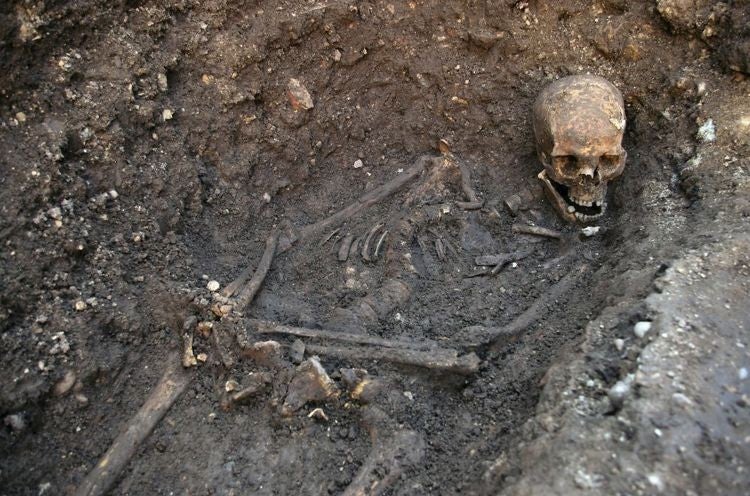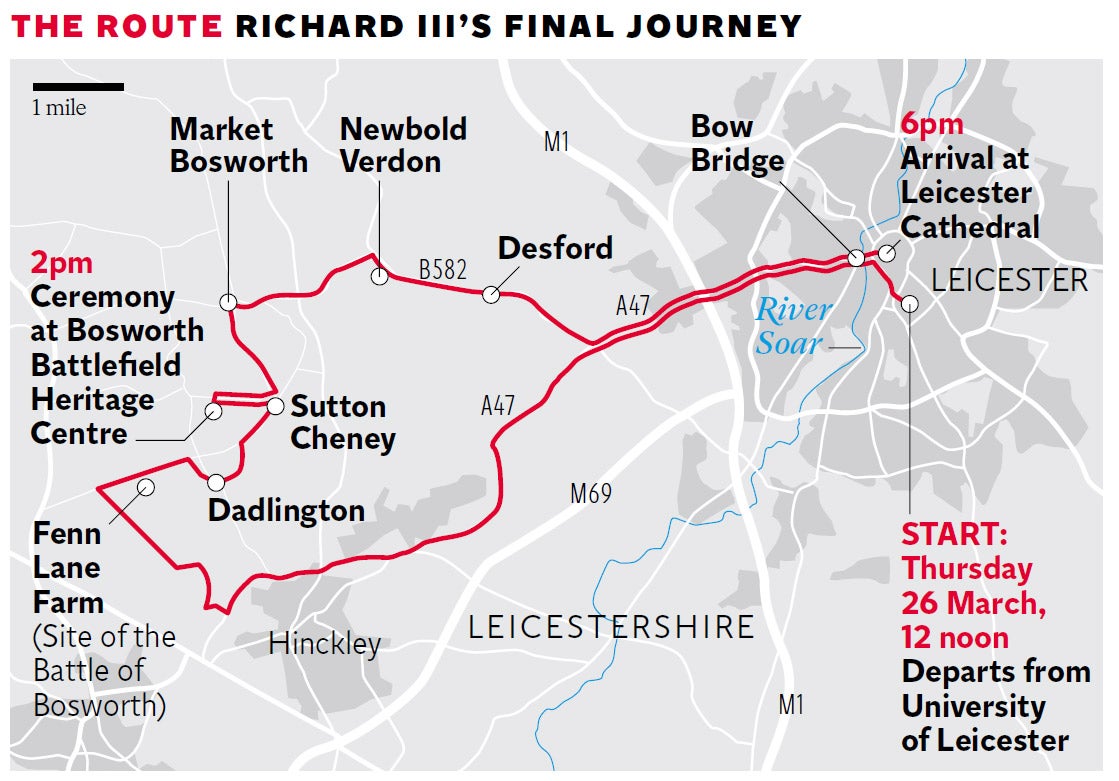Reburial of Richard III: It takes a corpse to bring history to life
We could do with some more dead bodies, frankly, to inject fresh vigour into the subject. Boudicca's last remains, anyone?

There is nothing quite like a corpse to have an animating effect on public debate. The body of Richard III, exhumed in 2012 from a car park in Leicester, and interred today in the city’s cathedral, has brought him to life like nothing else could have done. This holds good, incidentally, whether the body is actually his or not. There is a disobliging school of thought that holds the corpse being given a Christian burial with full liturgical honours is in fact someone else’s, on account of the limits of the evidence (the DNA, for instance, is only from his mother’s side). But for most people, what with the crooked spine and the way the skull has been hacked about, it’s pretty well settled: it’s Richard we’re laying to rest.
For most Brits who didn’t have the benefit of a grounding in Shakespeare’s historical plays, Richard’s reburial is possibly the first intimation they have had of his existence. For an entire generation, there have been about two, possibly three, things everyone knew about history: the Tudors and Hitler and Stalin. Or, if you’re unlucky, just Hitler. At least that’s what university history teachers have been telling me. The Great War is on the popular radar too, courtesy of the centenary, but the Wars of the Roses haven’t really registered. Too aristocratic, too confusing.
Now at least, more people have a notion that for the Tudors to surface in the first place, it required the Battle of Bosworth and the elimination of King Richard. Even the rows about what to do with the corpse – whether to bury him at Leicester or York, as a Catholic or an Anglican – are a useful reminder of the importance of both regional allegiances and religion.
Actually, if we can just settle that last one, of course he was a Catholic, just like everyone else. He was devout – quite conventionally devout. He had a well-worn Book of Hours; in one prayer he asks for the protection of the Archangel Michael for deliverance from his enemies. After the Battle of Towton, he established a chapel to pray for the souls of the dead, both friends and enemies. The notion of him being a proto-Protestant really is insulting.

Then there’s the debate about whether he was Good or Bad King Richard. There’s his and his wife’s endowment of two Cambridge colleges on the plus side. There’s the very contemporary notion of a Council of the North – one we might usefully adopt right now. There was his insistence that the poor should have access to justice and laws in their own language. For two years as a king, that wasn’t bad. On the debit side, there’s the matter of the Princes in the Tower, the nephews who were never seen again after he had them removed from the succession.
We wouldn’t be thinking about any of this were it not for that corpse in the car park. We could do with some more dead bodies, frankly, to inject fresh vigour into history. Boudicca’s last remains, anyone?

Join our commenting forum
Join thought-provoking conversations, follow other Independent readers and see their replies